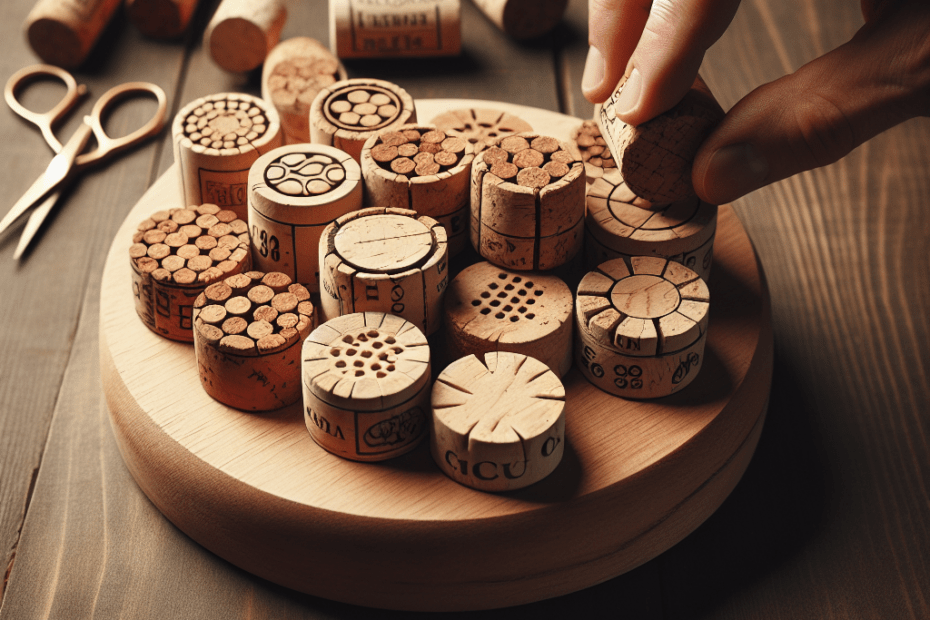“`html
Every household at some point contemplates how they can creatively reuse items that often end up in the trash. When it comes to wine lovers, they might find themselves collecting wine corks over time, little mementos of joyous gatherings, quiet evenings, or a special occasion. Instead of letting these corks clutter up a jar or hit the garbage, they can turn them into something functional and charming. Upcycled wine cork coasters are a fantastic, eco-friendly project that brings new life to corks that would otherwise go to waste.
Why Upcycled Wine Cork Coasters?
Cork, which is a sustainable and biodegradable material, is ideal for crafting because it can be easily cut and glued together. It also has natural insulating properties that make it great for coasters. According to a report by the Grand View Research, the global cork market size was estimated at USD 2.0 billion in 2021, showing the increasing demand and appreciation for this eco-friendly material.
Materials Needed
Before they start, gather the necessary materials:
- Old wine corks
- Sharp knife
- Strong adhesive or hot glue gun
- Sandpaper
- Ruler
- Craft board or soft cardboard (optional for backing)
- Decorative ribbon or twine (optional)
Step-by-Step Guide
1. Prepare the Corks
They should first soak the wine corks in warm water for about 10 minutes. This softens them up, making them easier to cut. After soaking, use a sharp knife to cut each cork into thin slices, approximately 1/4 inch thick.
2. Plan the Design
Lay out the cork slices into a circular or square pattern that they prefer. Make sure the slices are snugly fit next to each other, which will help form a sturdy and durable coaster.
3. Assemble the Coaster
Using strong adhesive or a hot glue gun, they can start adhering the cork slices together based on the design they’ve created. For extra durability, they might choose to glue their cork arrangement onto a craft board or soft cardboard backing.
4. Sand the Edges
Once the glue has set, gently sand the edges of the coasters to smooth out any rough areas or protruding cork pieces. This ensures that the coaster has a professional, finished look.
5. Add a Finishing Touch
If desired, they can wrap the outer edge of the cork coaster with decorative ribbon or twine for added aesthetic appeal. However, this step is optional based on their decorative preferences.
The Environmental Impact
Creating upcycled wine cork coasters not only allows individuals to engage in a satisfying craft project but also contributes positively to the environment. According to the Cork Quality Council, an estimated 13 billion natural wine corks are produced each year worldwide. By opting to reuse corks instead of discarding them, they are promoting sustainability and reducing waste.
Creative Variations
They can get creative with their coaster designs by incorporating different patterns, such as alternating vertical and horizontal cork pieces or arranging them in a spiraling circle. Additionally, incorporating colored corks or staining some of the cork slices can add a unique flair to their coasters.
| Steps | Description |
|---|---|
| Prepare Corks | Soak corks in warm water and slice them |
| Plan Design | Arrange cork slices into desired pattern |
| Assemble Coaster | Glue slices together and attach to backing if desired |
| Sand Edges | Smooth out rough edges with sandpaper |
| Finishing Touch | Add ribbon or twine around the edge (optional) |
Key Takeaways
- Upcycled wine cork coasters are a simple, environmentally friendly craft project.
- Corks are abundant and offers great insulation, making them ideal for coasters.
- They can personalize the design and finish of their coasters to suit different tastes.
- By reusing corks, they promote sustainability and help reduce global cork waste.
- This craft can also be a fun and educational activity for the whole family.
FAQs
- What can they make with old wine corks?
Besides coasters, they can make bulletin boards, keychains, or even plant markers. - Are cork coasters waterproof?
Yes, however, they should avoid soaking them since it can weaken the glue over time. - Can they use synthetic corks for this project?
Synthetic corks can work, but natural corks tend to adhere better and are more eco-friendly. - How many corks do they need per coaster?
Generally, they will need between 8-10 corks depending on the size of the coasters. - Where else can they find corks besides saving their own?
They can ask local restaurants or bars if they have used corks or shop at a craft store for recycled ones.
“`
